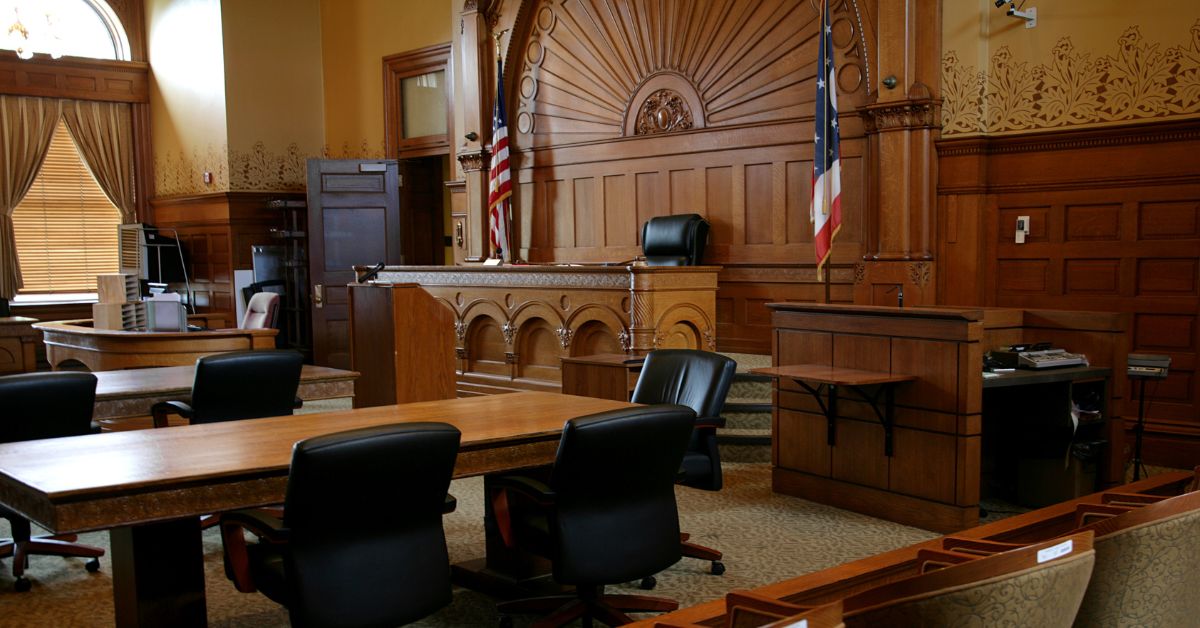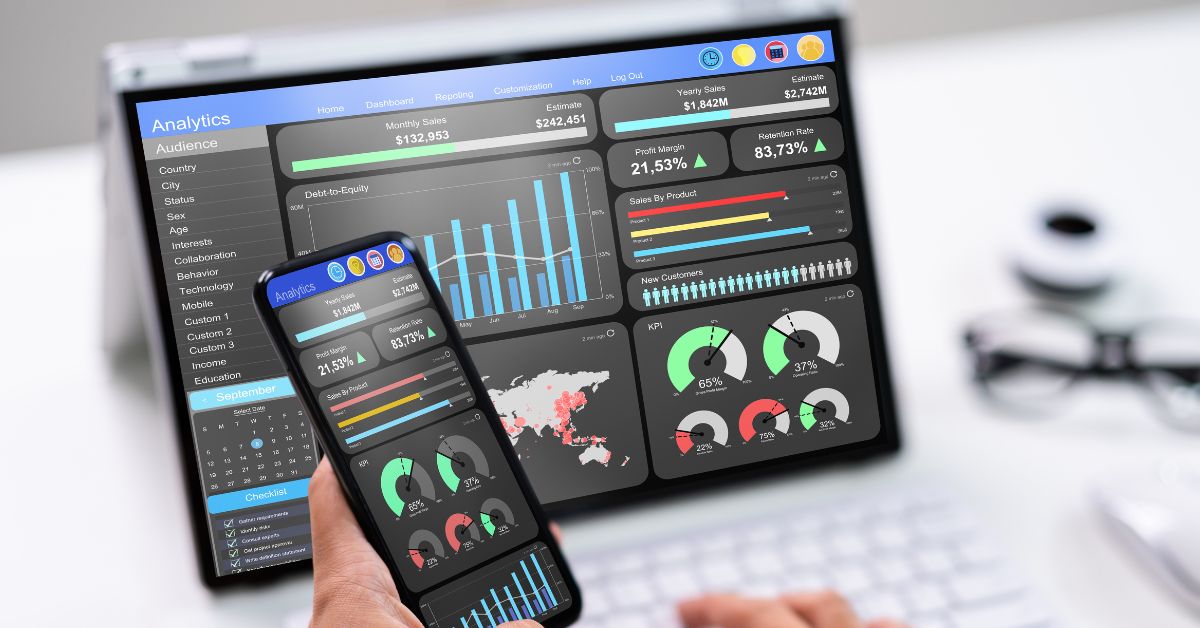The landscape of our court system is undergoing a significant transformation driven by the use of technology in courts.
This influx of innovation presents a unique opportunity to improve access to justice, streamline processes, and enhance fairness.
However, as with any significant change, we must carefully consider the potential downsides and ensure technology serves everyone equally.
Today, we’re asking: what is the future of technology in courts? What’s in store
Increased efficiency and public access
Technology in courts offers the potential to revolutionize the way courts function.
The Federal Judiciary’s 2020 Strategic Plan highlights the ability of technology to streamline judicial processes and make courts more accessible to the public.
Language translation tools can bridge language barriers, ensuring that everyone understands the proceedings. Additionally, automating repetitive tasks like document management and record-keeping can free up valuable staff time for more complex matters.
Perhaps most significantly, technology in courts can make them more accessible by facilitating remote participation. Dispute resolution is most effective when all parties can participate, and remote or digital courtrooms should become a standard, not a privilege. This technology allows geographically dispersed individuals to engage in the legal process, ensuring that distance is no longer a barrier to access.
During the pandemic, virtual court hearings became common practice, leading many to call for their permanent integration into the judicial system. Since the start of the COVID-19 pandemic, 78% of U.S. courts adopted virtual hearings as part of their regular operations, a significant increase from pre-pandemic levels when such technology was rarely used.
Remote hearings enable greater flexibility for lawyers, witnesses, and litigants who may otherwise struggle to attend court in person due to logistical or financial constraints.
This form of technology in courts not only improves accessibility but also reduces court backlogs and facilitates quicker case resolution.
User-centered design is key
Just as buildings need to be designed with the user in mind, so too must court technology infrastructure.
Technology needs to be user-friendly and accessible to all participants in the legal system. There is often a significant gap between the technology lawyers use and what is available in courtrooms.
When designing and implementing new systems, it’s crucial to consider the needs of all stakeholders, including judges, court staff, litigants, and attorneys.
Strategy for using technology in courts
The National Center for State Courts (NCSC) emphasizes planning for the flexible integration of technology in courts to improve information access, public services, and cost-efficiency in case processing. Courts that successfully implement technology can see significant improvements in the speed and efficiency of their case management.
For instance, the NCSC’s Court Technology Framework lays out strategic guidelines for adopting technology that supports court processes, focusing on flexible design, stakeholder engagement, and future-proofing systems for scalability and integration with emerging technologies.
Central to the NCSC’s strategy is the need to understand and meet user needs, including those of judges, court staff, attorneys, and most importantly, litigants.
User-centered design is critical because poorly designed interfaces or overly complex systems can be a significant barrier, particularly for self-represented litigants or individuals with limited technological literacy.
For example, according to a 2018 Pew Research study, 90% of courts implementing eFiling systems found that user training and support were essential for ensuring litigants could navigate these systems effectively, especially those representing themselves without legal counsel. Although a little outdated of course, the same principle applies to adopting tech in 2024 and beyond – buy-in is essential and a major barrier to overcome.
To create truly inclusive courtrooms, designers and policymakers must ensure that all systems prioritize accessibility, usability, and intuitive design. Accessibility goes beyond physical barriers like ramps or elevators; it extends to the digital realm as well.
According to the World Justice Project, courts that have implemented accessible online platforms and services are seeing greater engagement from disadvantaged populations.
This is particularly important when considering the digital divide, where marginalized communities may have less access to high-quality technology or internet connections. Courts must ensure their digital platforms are compatible with various devices, browsers, and internet speeds to reach the broadest audience possible. For more information, read another One Legal article about ADA compliance for law firms.
Usability testing and iterative design processes, where systems are tested with real users before and after deployment, are essential to ensure these technologies work as intended.
Courts should follow the best practices for user-centered design laid out in the Nielsen Norman Group’s Usability Framework, which emphasizes making systems easy to learn, efficient to use, and satisfying for users. This approach can significantly reduce errors, improve user satisfaction, and increase the overall effectiveness of court technology.
Beyond efficiency: Other considerations
The benefits of technology in courts extend far beyond just increased efficiency for those procedural hearings.
Predictive analytics, for example, can be used to optimize court resources and expedite case resolution by predicting caseloads, judge availability, and potential settlement opportunities. Courts can leverage data-driven insights to better allocate resources, ensuring that cases are processed faster and with fewer delays.
Additionally, the rise of remote proceedings underscores the importance of adapting to changing circumstances. A joint report by the Conference of Chief Justices and Conference of State Court Administrators highlights the need for remote-friendly court operations while prioritizing due process, fairness, and transparency.
Moreover, technology in courts can be a powerful tool for self-represented litigants who navigate complex legal issues without an attorney.
User-friendly online resources and self-help tools empower individuals to better understand legal processes, prepare for hearings, and even file documents electronically. This empowerment can help bridge the justice gap by providing equal access to legal services for those unable to afford legal representation.
Balancing innovation with fairness
As technology in courts becomes more prevalent, it is critical to ensure that it doesn’t undermine fundamental legal principles.
The criminal justice system, for example, provides specific constitutional protections for defendants. As technology is increasingly used in areas like risk assessment or pretrial release decisions, it is crucial to ensure that these safeguards remain intact and that algorithmic bias is mitigated.
Techniques to identify and mitigate bias in algorithms, as well as AI-powered tools that flag potentially biased language in legal arguments, can help maintain courtroom neutrality and promote fairer outcomes.
For instance, algorithms used in pretrial decisions have been criticized for perpetuating racial or socioeconomic biases, as highlighted by the Electronic Privacy Information Center. Careful monitoring and improvement of these systems are essential to prevent them from reinforcing existing disparities.
Security concerns in court technology
As we rely more heavily on technology in courts, security concerns become paramount. Courtrooms manage sensitive information, from personal details to confidential legal strategies, making them attractive targets for cyberattacks.
Data breaches could compromise the privacy of litigants, judges, and attorneys, leading to significant legal ramifications.
Ensuring robust cybersecurity measures is essential. Courts must invest in secure data storage, encrypted communication tools, and regular security audits to protect against threats.
Furthermore, training staff on cybersecurity best practices is equally important to prevent human error from leading to vulnerabilities. With so much sensitive information at stake, technology in courts must not only be efficient but also secure.
The role of law schools in technology training
While attorneys, courts, and agencies all influence the use of technology in courts, law schools play a crucial but underdeveloped role in improving access to justice through technology.
My experience suggests that law schools prioritize theory over practical skills, neglecting to equip students with the entrepreneurial mindset needed to run a modern practice.
Bridging the gap between law school and the technology-driven courtroom through practical training would significantly enhance the quality of legal representation.
Law schools should focus on teaching students how to use legal technology platforms, understand data analytics, and even develop basic coding skills that could help them navigate modern court systems.
Future trends: The road ahead for court technology
The transformation of the court system through tech is an ongoing process.
As the Federal Judiciary emphasizes, continuous adaptation and skill development for all stakeholders involved is crucial to ensure technology serves justice. By expanding remote participation, leveraging technology for information gathering, prioritizing user experience, and addressing potential biases, we can move towards a more modern, efficient, and equitable court system for all.
Looking forward, we can anticipate further developments in the use of artificial intelligence (AI) and machine learning in courts.
AI could assist in sorting case files, predicting case outcomes, and even automating routine legal research tasks, significantly reducing the burden on court staff.
However, with these advancements come new challenges, particularly in ensuring transparency and accountability in AI-driven decision-making processes.
Conclusion
The integration of technology in courts holds immense promise for transforming how the judicial system operates. By making courts more accessible, efficient, and secure, these innovations can help deliver justice more effectively.
However, as we move forward, it is essential to balance this technological transformation with a commitment to fairness, neutrality, and privacy.
A truly modern court system is one where technology in courts serves not just the convenience of the institution but the rights and needs of all individuals involved.
By maintaining this focus, we can ensure that the courtroom of the future is one that upholds the principles of justice while embracing the best that technology has to offer.








